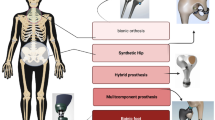Abstract
This study aimed to identify the customers’ requirements for a hand rehabilitation exoskeleton device using the Kansei Engineering approach and propose improvements. The Kansei Engineering approach was used to extract the design attributes for a hand rehabilitation exoskeleton device by conducting an in-depth interview with 3 physical therapists. The Kano questionnaire survey investigated 25 participants with hand rehabilitation experience. The Kano classification results found three attractive factors and corresponded it to the design attributes of the evaluation grid method results that were suitable (size), flexible (controllability), and light (weight). The principal component analysis results indicated three components can be considered as the improvement categories; functions, structure-texture, and appearance of the hand exoskeleton device. The new functional and structural designs were proposed in a previous study. This study collects 110 male participants’ hand anthropometric data to establish a hand sizing system as a design improvement (suitable attribute). The 3D and manual measurements were obtained for 63 hand dimensions with an open palm posture. The 14 dorsal length dimensions with three bent finger postures were also manually measured. The results showed that the \({\text{MAD}}_{\text{Precision}}\) (mean absolute difference) of 3D measurement is smaller than that of manual measurement, indicating better reproducibility of 3D scanning. The \({\text{MAD}}_{\text{Accuracy}}\) of all dimensions are within the 1 mm of the referenced ISO 20685 criteria. Significant differences were found in the 14 dorsal hand length, showing that databases should explicitly state the aspect (dorsal or palmar) where dimensions have been of measurement. The 77 hand dimensions were taken into consideration to develop a hand sizing system using the clustering results. The two-level self-organizing map method was performed and 3 handshape types and 8 sizes were extracted. The coverage rate of the sizing system was over 85%. These results provide useful information for designing and manufacturing for hand-related products.












Similar content being viewed by others
References
Birouas FI, Avra F, Tarca RC (2018) Anthropometric measurements for hand rehabilitation robotic devices using video processing. In: IOP conference series: materials science and engineering, IOP Publishing, vol. 444, no. 5, p 052028
Book NAS (1978) NASA reference publication 1024. National Aeronautics and Space Administration, Scientific and Technical Information Office, Hanover, MD
Churchill W, Laubach L, McConville J, Tebbetts I (eds) (1978) Anthropometric source book volume 1: anthropometry for designers. NASA Reference Publication 1024
EN 420 (2003) Protective gloves. General requirements and test methods. In: European Committee for Standardization, CEN
Greiner TM (1991) Hand anthropometry of US army personnel (No. TR-92/011). Army Natick Research Development and Engineering Center, MA
Habib MK, Davim JP (2013) Interdisciplinary mechatronics: engineering science and research development. John Wiley & Sons, Hoboken
Herr H (2009) Exoskeletons and orthoses: classification, design challenges and future directions. J Neuroeng Rehabil 6(1):21
Hsiao H, Whitestone J, Kau TY, Whisler R, Routley JG, Wilbur M (2014) Sizing firefighters method and implications. Hum Factors 56:873–910
Imrhan SN, Sarder MD, Mandahawi N (2006) Hand anthropometry in a sample of Bangladesh males. In: 2006 IIE annual conference and exhibition
ISO 20685 (2005) 3D scanning methodologies for internationally compatible anthropometric databases. In: International Organization for Standardization, ISO, Switzerland
ISO 7250-1:2008 (2008) Basic human body measurements for technological design: Part 1. Body measurement definitions and landmarks. In: International Organization for Standardization, ISO, Switzerland
JIS S 4051 (2009) Sizing systems and pictogram for adult gloves. Japanese Standards Association
Jee SC, Bahn S, Yun MH (2015) Determination of sex from various hand dimensions of Koreans. Forensic Sci Int 257:521–e1
Kano N (1984) Attractive quality and must-be quality. J Jpn Soc Qual Control 14(2):39–48
Kano N (1995) Upsizing the organization by attractive quality creation. In: Kanji GK (ed) Proceedings of the first total quality management world congress. Chapman & Hall, London, pp 60–71
Kouchi M (2012) AIST 日本人の手の寸法データ. https://www.airc.aist.go.jp/dhrt/hand/data/list.html. Accessed 16 July 2020
Kuo CC, Wang MJ, Lu JM (2020) Developing sizing systems using 3D scanning head anthropometric data. Measurement 152:107264
Lai YS, Chen CH, Lin SC (2013) A study on attractive factor of fun chair. In IASDR 2013 5th international congress of international association of societies of design research, vol 1, pp 3875–3886
Matzler K, Hinterhuber HH (1998) How to make product development projects more successful by integrating kano's model of customer satisfaction into quality function deployment. Technovation 18(1):25–38
Muellbacher W, Richards C, Ziemann U, Wittenberg G, Weltz D, Boroojerdi B et al (2002) Improving hand function in chronic stroke. Arch Neurol 59(8):1278–1282
Nagamachi M (1995) Kansei engineering: a new ergonomic consumer-oriented technology for product development. Int J Ind Ergon 15(1):3–11
Pons JL (2010) Rehabilitation exoskeletal robotics. IEEE Eng Med Biol Mag 29(3):57–63
Pu SW, Chang JY, Pei YC, Kuo CC, Wang MJ (2016) Anthropometry-based structural design of a hand exoskeleton for rehabilitation. In: 2016 23rd international conference on mechatronics and machine vision in practice (M2VIP), pp 1–6
Roger VL, Go AS, Lloyd-Jones DM et al (2011) Heart disease and stroke statistics—2011 update: a report from the American Heart Association. Circulation 123(4):e18–e209
Sandoval-Gonzalez O, Jacinto-Villegas J, Herrera-Aguilar I, PortilloRodiguez O, Tripicchio P, Hernandez-Ramos M et al (2016) Design and development of a hand exoskeleton robot for active and passive rehabilitation. Int J Adv Robot Syst 13(66):1–12
Shen KS, Chen KH, Liang CC, Pu WP, Ma MY (2015) Measuring the functional and usable appeal of crossover B-Car interiors. Hum Factors Ergon Manuf Service Ind 25(1):106–122
Takahashi CD, Der-Yaghan L, Le V, Motilal RR, Cramer SC (2008) Robot-based hand motor therapy after stroke. Brain 131(2):425–437
Troncossi M, Mozaffari-Foumashi M, Parenti-Castelli V (2016) An original classification of rehabilitation hand exoskeletons. J Robot Mech Eng Res 1(4):17–29
Vergara M, Agost MJ, Gracia-Ibáñez V (2018) Dorsal and palmar aspect dimensions of hand anthropometry for designing hand tools and protections. Hum Factors Ergon Manuf Service Ind 28(1):17–28
Volpe BT, Ferraro M, Lynch D, Christos P, Krol J, Trudell C et al (2005) Robotics and other devices in the treatment of patients recovering from stroke. Curr Neurol Neurosci Rep 5(6):465–470
Wang T, Zhou M (2019) Research on production form attractiveness factors based on users’ emotional needs. In: International conference on human-computer interaction, Springer, Cham, pp 533–546
Wang MJ, Wang EMY, Lin YC (2002) Anthropometric data book of the Chinese people in Taiwan. Ergonomics Society of Taiwan, Hsinchu
Westerveld AJ, Aalderink BJ, Hagedoorn W, Buijze M, Schouten AC, van der Kooij H (2014) A damper driven robotic end-point manipulator for functional rehabilitation exercises after stroke. IEEE Trans Biomed Eng 61(10):2646–2654
Yu A, Yick KL, Ng SP, Yip J (2013) 2D and 3D anatomical analyses of hand dimensions for custom-made gloves. Appl Ergon 44(3):381–392
Zhang F, Yang M, Liu W (2014) Using integrated quality function deployment and theory of innovation problem solving approach for ergonomic product design. Comput Ind Eng 76:60–74
Author information
Authors and Affiliations
Corresponding author
Additional information
Publisher's Note
Springer Nature remains neutral with regard to jurisdictional claims in published maps and institutional affiliations.
Rights and permissions
About this article
Cite this article
Kuo, CC., Kung, HY., Wu, HC. et al. Developing a hand sizing system for a hand exoskeleton device based on the Kansei Engineering method. J Ambient Intell Human Comput 14, 14395–14407 (2023). https://doi.org/10.1007/s12652-020-02354-8
Received:
Accepted:
Published:
Issue Date:
DOI: https://doi.org/10.1007/s12652-020-02354-8




